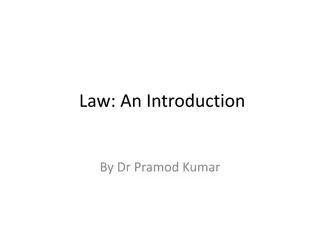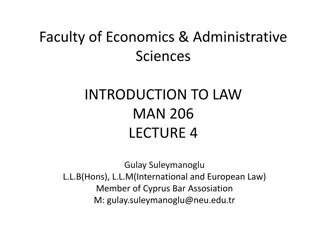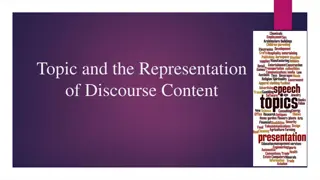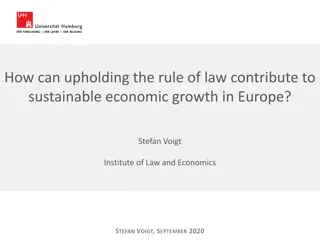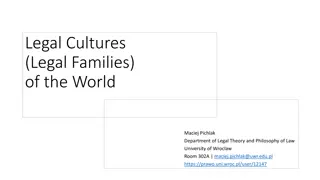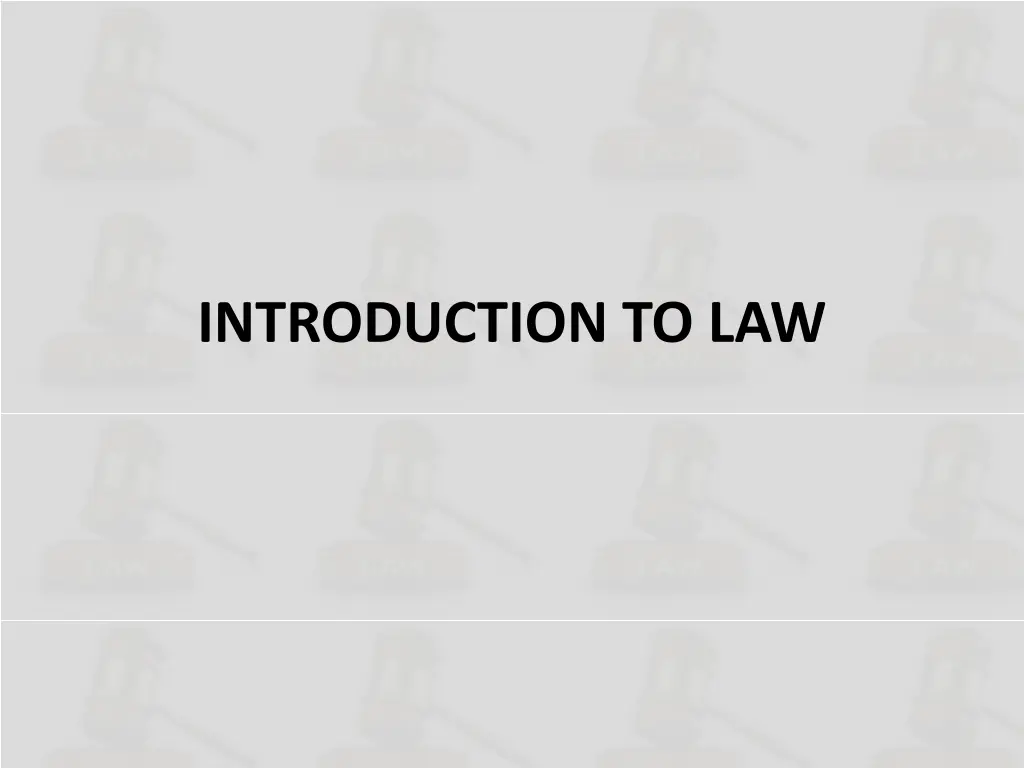
Understanding the Definition and Classification of Law
Explore the diverse perspectives on the definition of law and its classification into criminal, civil, municipal, international, public, and private law. Discover how law functions as a set of rules enforcing societal interactions and standards of conduct.
Download Presentation

Please find below an Image/Link to download the presentation.
The content on the website is provided AS IS for your information and personal use only. It may not be sold, licensed, or shared on other websites without obtaining consent from the author. If you encounter any issues during the download, it is possible that the publisher has removed the file from their server.
You are allowed to download the files provided on this website for personal or commercial use, subject to the condition that they are used lawfully. All files are the property of their respective owners.
The content on the website is provided AS IS for your information and personal use only. It may not be sold, licensed, or shared on other websites without obtaining consent from the author.
E N D
Presentation Transcript
DEFINITION OF LAW No definite definition to the word law A great diversity among the western scholars Sir John Austin: Law is a commands set by a sovereign or superior being to an inferior being and forced by sanctions. Professor Hartz: Law is a necessary tool to regulate and protect the collective interests of the society. Karl Max: Law was an instrument used by the wealthy class to dominate and exploit the weaker and labouring class.
WHAT ARE THE SYMBOLS THAT COME ACROSS YOUR MIND??
Generally law can be described as a set of rules, developed over a long period of time that regulates interactions that people have with each other, and which sets standards of conduct between individuals and the government and which is enforceable through sanction.
3 MAIN POINTS ON THE DEFINITION OF LAW 1. a set of rules 2. regulates interactions between people/parties 3. enforceable through sanction.
Article 160(2) of the Federal Constitution law includes: 1. Written Law 2. common law that is in operation in the federation or any part thereof 3. any custom or usage having the force of law in the federation or in any part thereof
CLASSIFICATION OF LAW Law has been classified in various ways. The four main divisions are as follow: Criminal law & Civil Law Municipal Law & International Law Public Law & Private Law Substantive Law & Procedural Law
CRIMINAL LAW - Offences against the state - The criminal offender is prosecuted by the Public Prosecutor. - Punishments: Fine, death sentence, whipping, imprisonment. - PP v defendant CIVIL LAW - It concerned with the right and duties of individuals towards each other. - Plaintiff / Claimant v Defendant - Remedy: Damages, injunction, rectification, specific performance.
MUNICIPAL LAW - Also known as domestic law - It refers to the set of laws applied within a nation state. - Set of laws applied within a nation state - Different in each country INTERNATIONAL LAW - Body of law which is composed for its greater part of the principles and rules of conduct which states feel themselves bound to observe, and consequently commonly do observe, in their relation with each other.
PUBLIC LAW Law which governs the relationship between individuals and the state. PRIVATE LAW It concerned with matters that affect the rights and duties of individuals amongst themselves. It is intended to give compensation to person injured, to enable property to be recovered from wrongdoers, and to enforce obligations.
SUBSTANTIVE LAW - Deals with rights, duties, liberties, power and all other matters that are not matters purely on practice and procedure. - It is the law that governs our daily practices and conduct. PROCEDURAL LAW It relates to the enforcements of rights and duties.
REFERENCES Lee Mei Pheng, (2005). General Principles of Malaysian Law. 5th Ed. MY: Penerbit Fajar Bakti.



